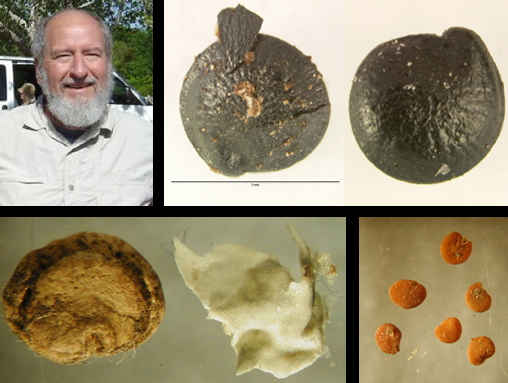
Why do Native Americans experience high rates of diabetes? A common theory is that they possess fat-hoarding "thrifty genes" left over from their ancestors — genes that were required for survival during ancient cycles of feast and famine, but that now contribute to the disease in a modern world of more fatty and sugary diets.
A newly published analysis of fossilized feces from the American Southwest, however, suggests this "thrifty gene" may not have developed because of how often ancient Natives ate. Instead, researchers said, the connection may have come from precisely what they ate.
The research, which was published in the journal Current Anthropology, suggests that the prehistoric hunter-gatherer civilizations of the Southwest lived on a diet very high in fiber, very low in fat and dominated by foods extremely low on the glycemic index, a measure of effects food has on blood sugar levels. This diet, researchers said, could have been sufficient to give rise to the fat-storing "thrifty genes."
"What we're saying is we don't really need to look to feast or famine as a basis for (the genes)," said Karl Reinhard, professor of forensic sciences at UNL's School of Natural Resources and the study's lead author. "The feast-or-famine scenario long hypothesized to be the pressure for 'thrifty genes' isn't necessary, given the dietary evidence we've found."
Natives have some of the highest rates of Type 2 diabetes of any group and are more than twice as likely to develop the disease as are Caucasians. The notion the gene's origin goes back to feast-and-famine cycles among prehistoric hunter-gatherer ancestors has been discussed for nearly a half-century.
To fully understand the basis of the high rates, Reinhard said, "one has to look at the best dietary data one can find. That comes from coprolites (the official term for fossilized feces). By looking at coprolites, we're seeing exactly what people ate."
The coprolites are from Antelope Cave, a deep cavern in northern Arizona where, over several thousands of years, was home to various cultures. That includes the ancestral Pueblan peoples, who are believed to have lived there seasonally for at least 450 years.
Reinhard and Keith Johnson, an archeologist at California State University, Chico, studied 20 coprolites found in the cave and combined that information with analysis from other sites for hints of ancient Natives’ diets. They found clues to a food regimen dominated by maize and high-fiber seed from sunflowers, wild grasses, pigweed and amaranth.
Prickly pear, a desert succulent, was also found repeatedly in the samples. By volume, about three-quarters of the Antelope Cave coprolites were made up of insoluble fiber. The foods also were low on the glycemic index; some research suggests that high-GI foods may increase risk of obesity and diabetes.
The analysts' findings led them to deduce that the nature of the feast, and not necessarily its frequency, was enough to lock the "thrifty" genes in place — and leave modern Natives more susceptible to diabetes as their diets evolved to lower-fiber, higher-GI foods.
"These were not just famine foods," the authors wrote. "These were the foods eaten on a day-by-day basis during all seasons in both feast and famine. They continued to be eaten even after agriculture was developed. Antelope Cave coprolites show that this high-fiber diet was eaten during the warmer seasons of food abundance."
In addition to UNL's Reinhard and California State Chico's Johnson, the study was authored by Isabel Teixeira-Santos and Monica Viera of the Escola Nacional de Saude Publica in Rio de Janeiro, Brazil.
— Steve Smith, University Communications and Kevin Stacey, University of Chicago Press